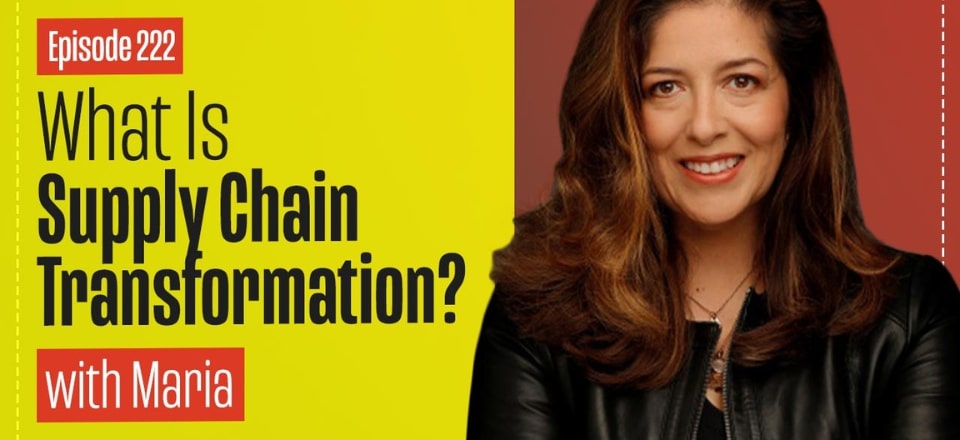What are the critical drivers of Supply Chain Transformation?
How does it impact people and organizations?
Watch the video below as expert Maria Villablanca explores the essential aspects of supply chain transformation and its broader effects.
Discover valuable insights from a top industry expert.
In today’s discussion, we dive into the concept of supply chain transformation. Our guide is Maria Villablanca, an expert in this field. We’ll explore what supply chain transformation is, common pitfalls, and its key components.
What is Supply Chain Transformation?
Maria Villablanca begins by explaining that supply chain transformation goes beyond digital tools and processes. Historically, supply chains relied heavily on analog methods, such as Excel spreadsheets and paper-based processes. This lack of visibility and traceability led to inefficiencies.
Supply chain transformation encompasses a broader shift. It involves not only digital upgrades but also changes in business models, processes, and organizational mindset. With recent global events and technological advancements, businesses are required to rethink their supply chains comprehensively.
Key Areas of Supply Chain Transformation
Digital Integration: A major part of supply chain transformation is digitizing outdated and labor-intensive practices. Companies are now using advanced data analytics and generative AI to enhance decision-making, improve transparency, and streamline operations.
Business Model Changes: Traditional supply chains are evolving. For instance, many companies are shifting from wholesale to direct-to-consumer models. This change is driven by trends like e-commerce and the need for greater efficiency.
Sustainability Initiatives: Sustainability is a significant aspect of supply chain transformation. Companies are redesigning processes to reduce environmental impact. An example is Coca-Cola’s initiative to tether bottle caps to reduce landfill waste.
Recognizing the Need for Transformation
Supply chain transformation isn’t exclusive to large corporations. Smaller businesses also need to adapt to new regulations and consumer demands. Transparency and digital practices are becoming crucial. For instance, even small suppliers must align with larger companies’ standards for sustainability and transparency.
Common Pitfalls in Transformation
Embarking on supply chain transformation can be daunting. One common mistake is attempting a complete overhaul all at once. Transformation should be an ongoing process, starting with specific areas like procurement or data management.
Another pitfall is the “shiny new object” syndrome. Companies often invest in the latest technologies without addressing fundamental problems. Effective transformation starts with identifying and solving core issues that will benefit stakeholders.
Continuous Improvement Approach
Maria emphasizes that transformation should be gradual and problem-focused. Start by addressing specific pain points and then expand improvements across the business. This approach is akin to continuous improvement, allowing for manageable changes and better outcomes.
Watch the complete video above for detailed information of this topic.
Connect with Maria here:
YouTube: https://www.youtube.com/@MariaPVillablanca
Website: https://www.mariavillablanca.com/
Linkedin: https://www.linkedin.com/in/mariavillablanca/
And listen to Maria’s podcast here: https://podcasts.apple.com/gb/podcast/transform-talks-the-supply-chain-transformation-podcast/
Related articles on this topic have appeared throughout our website, check them out:
- Future Supply Chain Insights from Pro-to-know, Sheri Hinish
- These Three Technologies are Hot, But Are Supply Chains Adopting Them?
- Supply Chain and the Internet of Things – Towards New Paradigms
- Change Leadership: The Real Key to Transforming Your Supply Chain
- 6 Steps to Sustainable Supply Chain Reality
Editor’s Note: The content of this post was originally published on Logistics Bureau’s website dated February 14, 2024, under the title “Understanding Supply Chain Transformation with Maria Villablanca“

